Abstract
Simpson, Kenneth L. (University of California, Davis), T. O. M. Nakayama, and C. O. Chichester. Biosynthesis of yeast carotenoids. J. Bacteriol. 88:1688–1694. 1964.—The biosynthesis of carotenoids was followed in Rhodotorula glutinis and in a new strain, 62-506. The treatment of the growing cultures by methylheptenone, or ionone, vapors permitted observations of the intermediates in the biosynthetic pathway. On the basis of concentration changes and accumulation in blocked pathways, the sequence of carotenoid formation is postulated as phytoene, phytofluene, ζ-carotene, neurosporene, β-zeacarotene, γ-carotene, torulin, a C40 aldehyde, and torularhodin. Torulin and torularhodin were established as the main carotenoids of 62-506.
Full text
PDF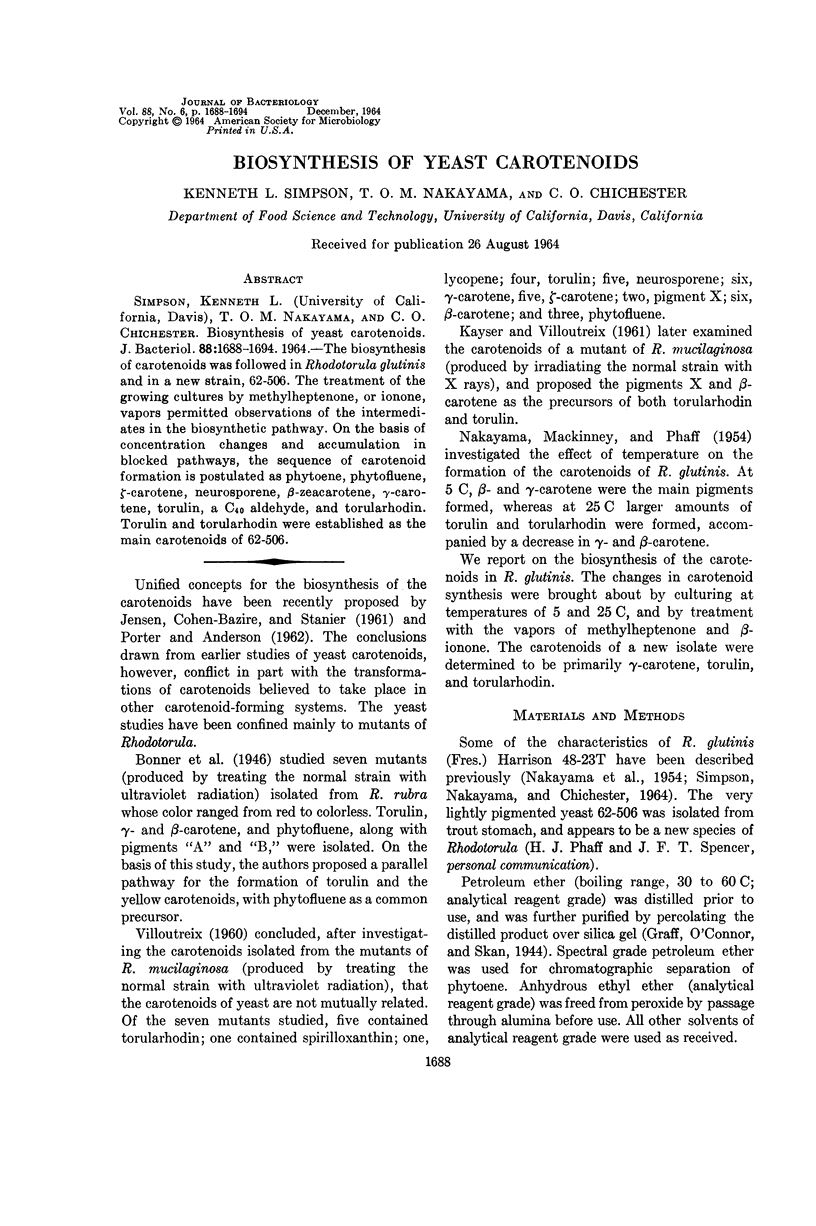
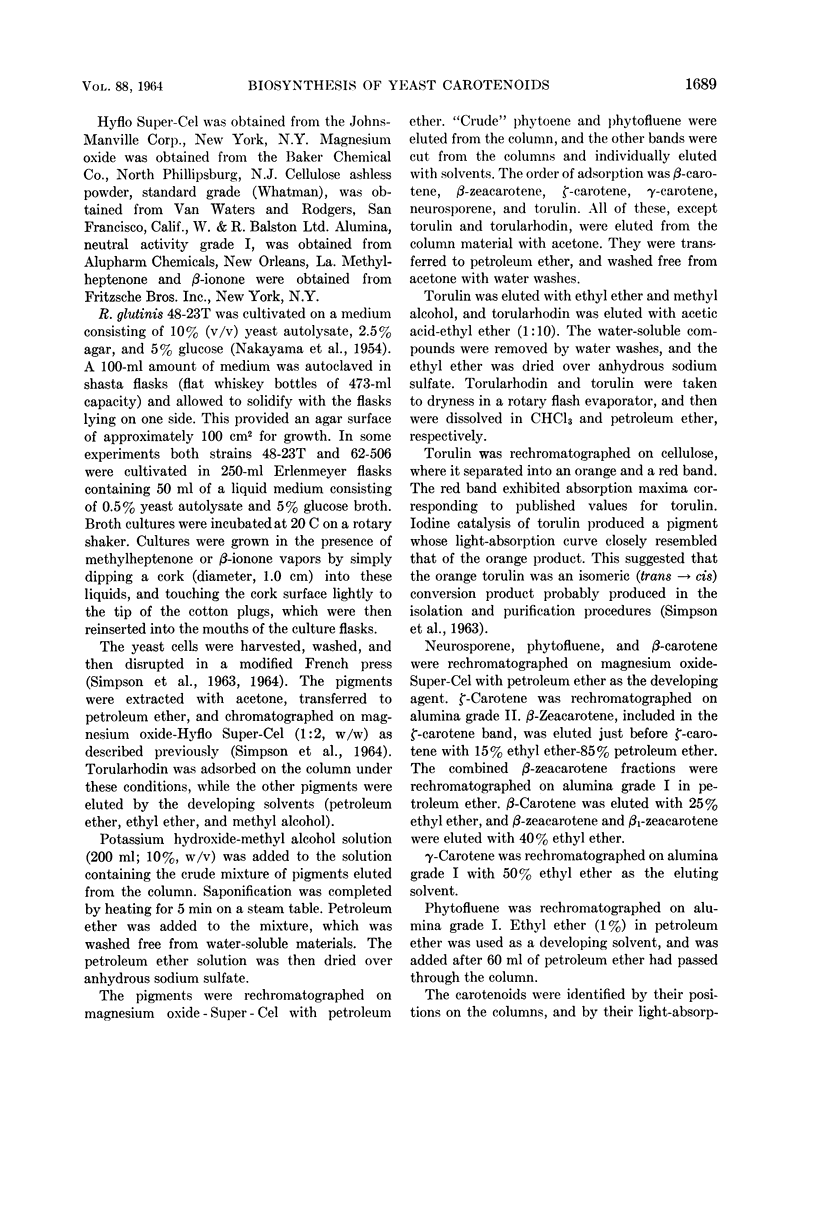
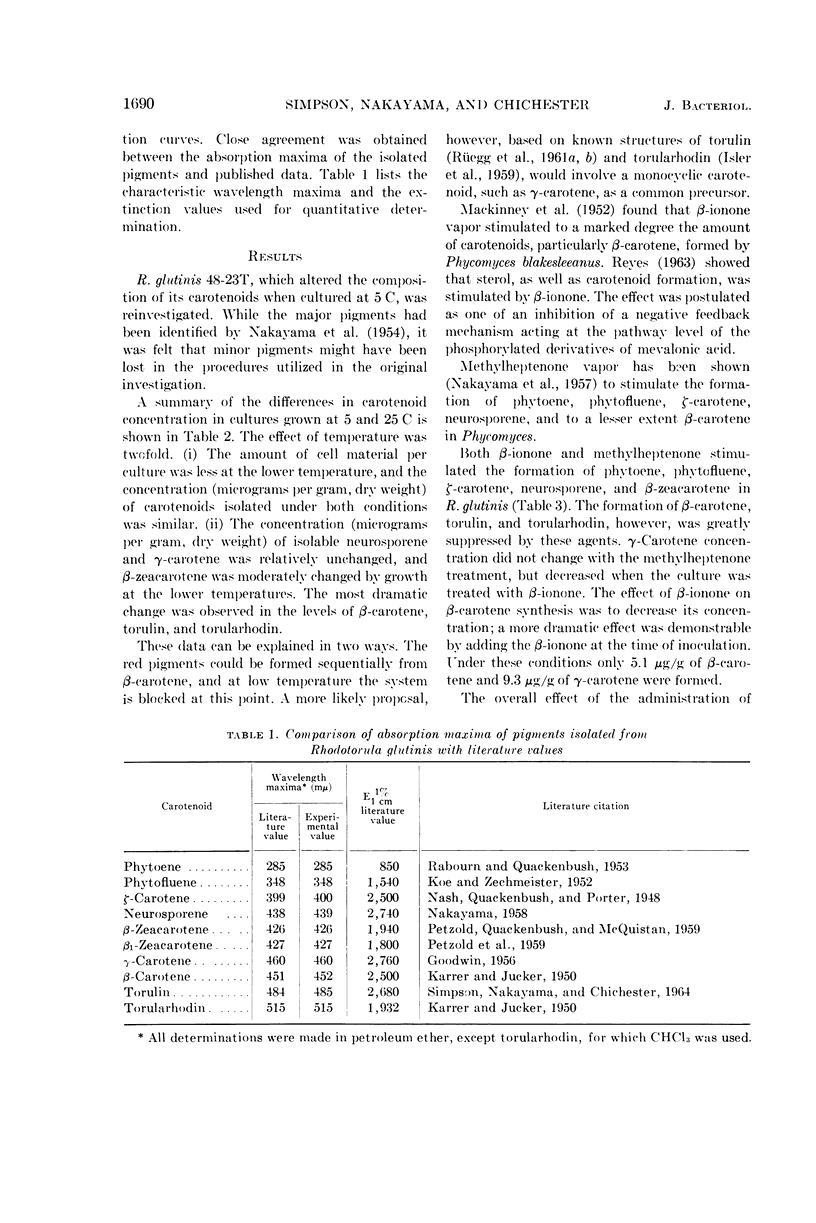
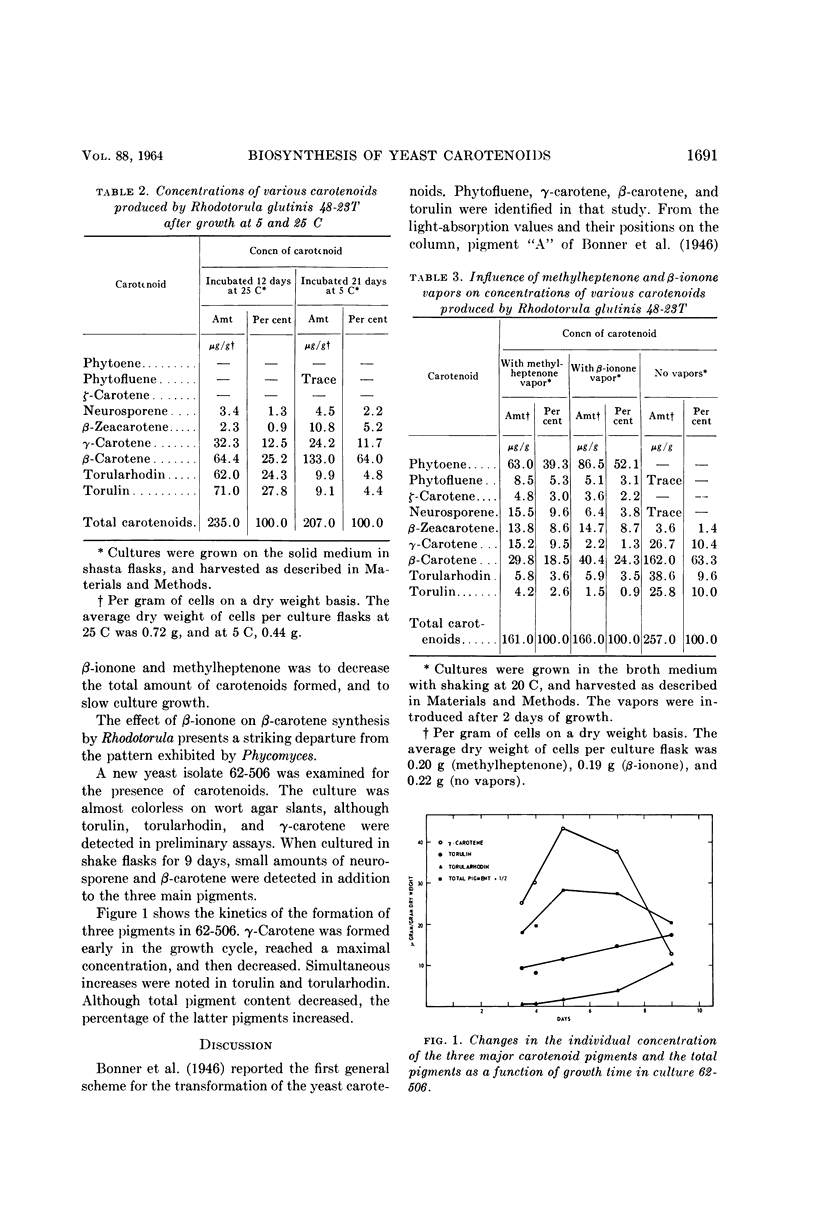
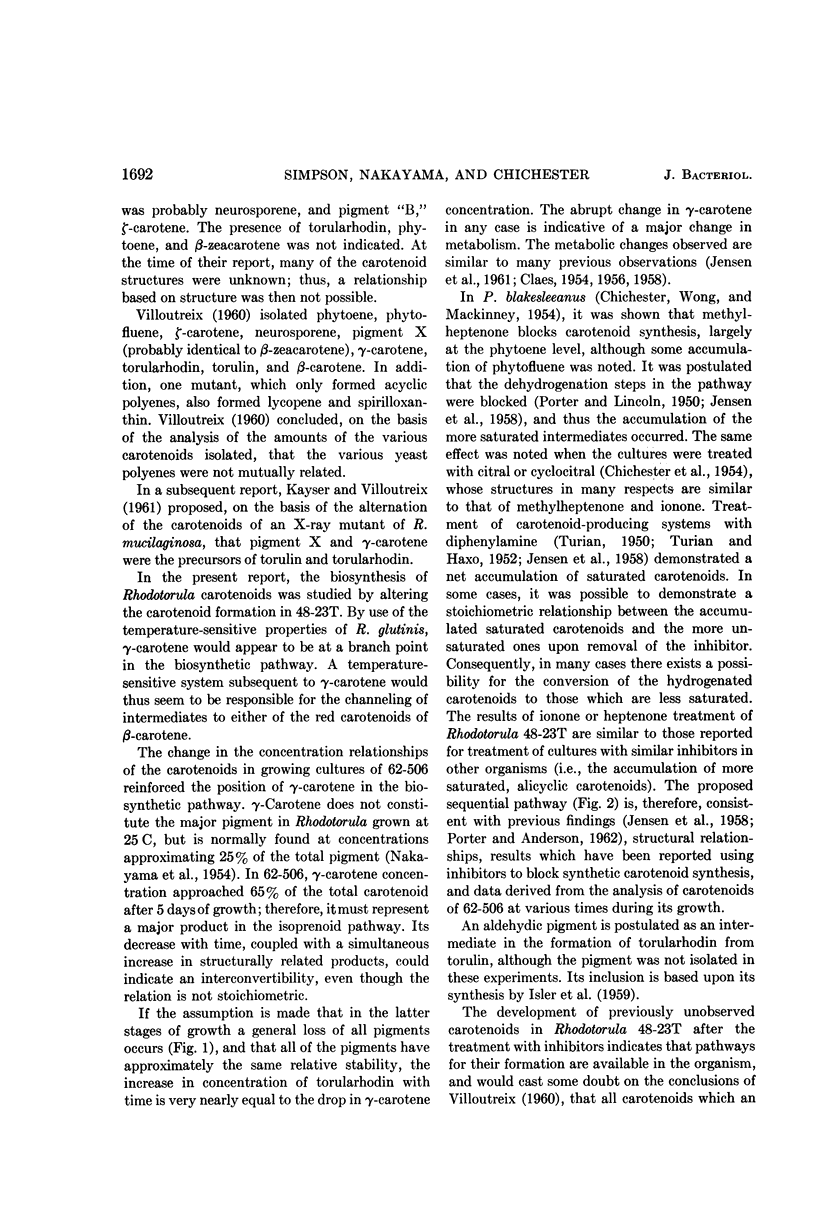
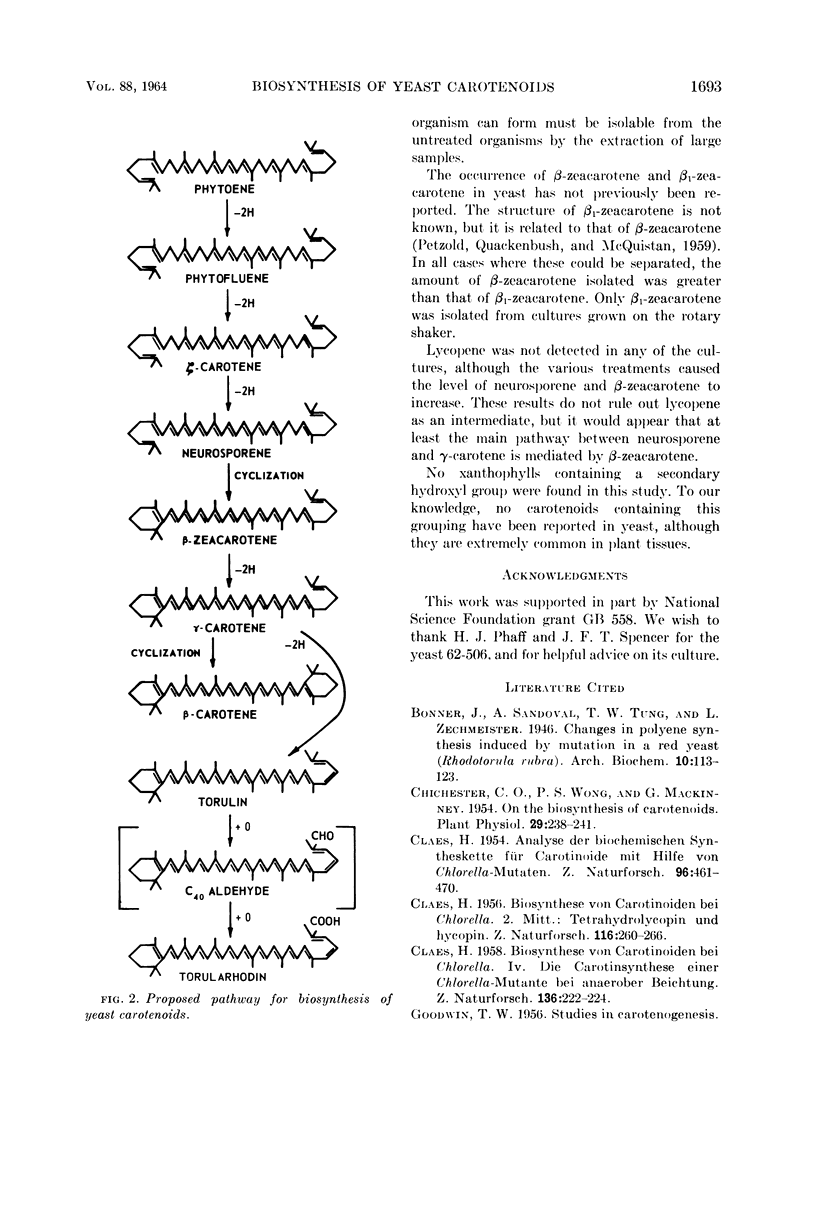
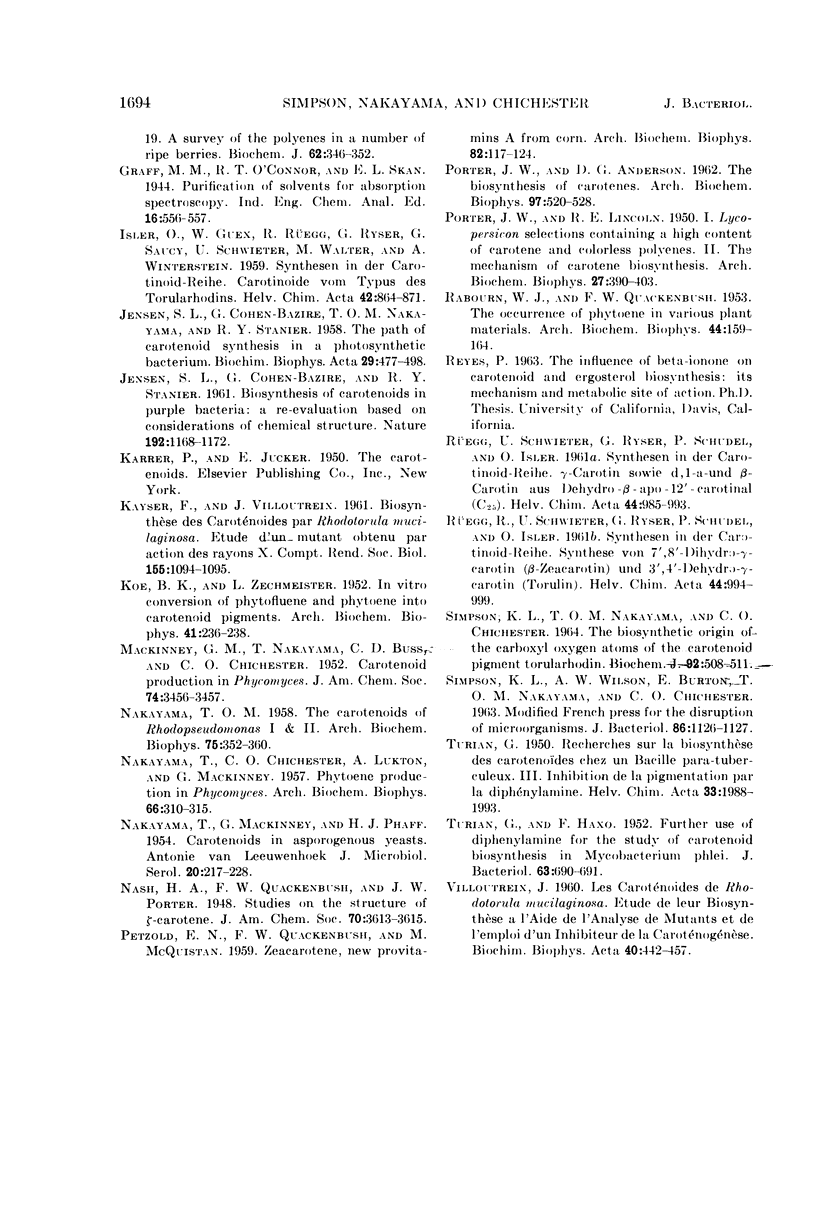
Selected References
These references are in PubMed. This may not be the complete list of references from this article.
- JENSEN S. L., COHEN-BAZIRE G., NAKAYAMA T. O., STANIER R. Y. The path of carotenoid synthesis in a photosynthetic bacterium. Biochim Biophys Acta. 1958 Sep;29(3):477–498. doi: 10.1016/0006-3002(58)90003-9. [DOI] [PubMed] [Google Scholar]
- JENSEN S. L., COHEN-BAZIRE G., STANIER R. Y. Biosynthesis of carotenoids in purple bacteria: a reevaluation based on considerations of chemical structure. Nature. 1961 Dec 23;192:1168–1172. doi: 10.1038/1921168a0. [DOI] [PubMed] [Google Scholar]
- KAYSER F., VILLOUTREIX J. [Biosynthesis of carotenoids by Rhodotorula mucilaginosa. Study on a mutant obtained by the action of x-rays]. C R Seances Soc Biol Fil. 1961;155:1094–1095. [PubMed] [Google Scholar]
- KOE B. K., ZECHMEISTER L. In vitro conversion of phytofluene and phytoene into carotenoid pigments. Arch Biochem Biophys. 1952 Nov;41(1):236–238. doi: 10.1016/0003-9861(52)90525-0. [DOI] [PubMed] [Google Scholar]
- NAKAYAMA T. O. The carotenoids of Rhodopseudomonas. II. A comparative study of mutants and the wild type. Arch Biochem Biophys. 1958 Jun;75(2):356–360. doi: 10.1016/0003-9861(58)90433-8. [DOI] [PubMed] [Google Scholar]
- NAKAYAMA T., CHICHESTER C. O., LUKTON A., MACKINNEY G. Phytoene production in Phycomyces. Arch Biochem Biophys. 1957 Feb;66(2):310–315. doi: 10.1016/s0003-9861(57)80006-x. [DOI] [PubMed] [Google Scholar]
- NAKAYAMA T., MACKINNEY G., PHAFF H. J. Carotenoids in asporogenous yeasts. Antonie Van Leeuwenhoek. 1954;20(2):217–228. doi: 10.1007/BF02543724. [DOI] [PubMed] [Google Scholar]
- PORTER J. W., ANDERSON D. G. The biosynthesis of carotenes. Arch Biochem Biophys. 1962 Jun;97:520–528. doi: 10.1016/0003-9861(62)90116-9. [DOI] [PubMed] [Google Scholar]
- PORTER J. W., LINCOLN R. E. Lycopersicon selections containing a high content of carotenes and colorless polyenes; the mechanism of carotene biosynthesis. Arch Biochem. 1950 Jul;27(2):390–403. [PubMed] [Google Scholar]


